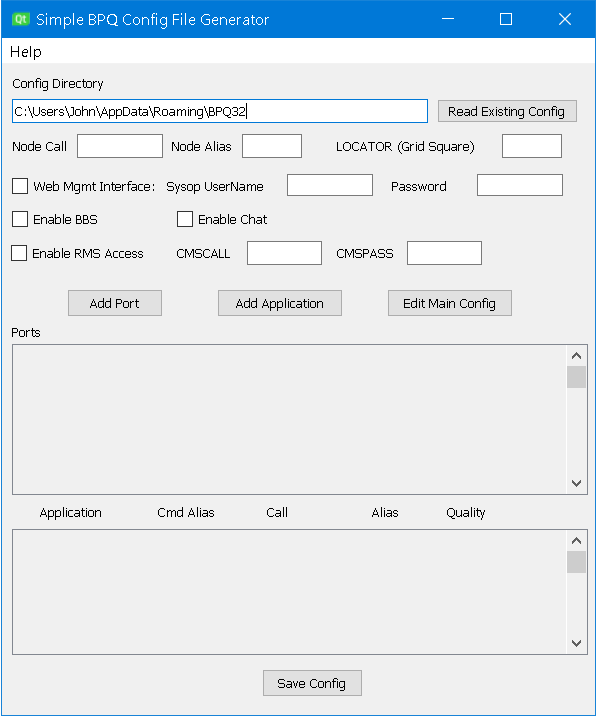
A minimal configuration can be created by entering a Node Callsign and adding at least one port. All LinBPQ users and most Windows users will want a Telnet port for management. This can be added by setting a username and password and enabling the Web Mgmt Interface. If you want them you can then enable the BBS, CHAT Server or Winlink Gateway by checking the appropriate box. You may want to customise the Application definitions by changing the callsign or setting a NETROM Alias and Quality. Other applications can be added using the "Add Application" button and filling in the details.
You can add ports for your radios using the "Add Port" button and selecting the port type from the drop down list. For the more commonly used port types a full default configuration will be created. Others will just create a skeleton config. In either case you can use the Edit button to customise the config.
BPQConfigGen only allows you to create or edit the basic Node identification info and your ports and application definitions. Other BPQ features, such as APRS, can be added using the "Edit Main Config" button and entering the necessary config statements.
Once you have a config file you can edit it by using the "Read Existing Config" button. This can also read configs not created using BPQConfigGen. If that is the case you will get a warning message that the config may not be read correctly, but normally it will be fine.
If you read an existing config file comments will normally be kept, but the order of configuration sections may be changed. The new file will have the Port and Application definitions at the end.
Before a file is updated a copy of the original config is saved with a date/time stamp appended. There is no housekeeping of these - you will need to delete any you no longer need.